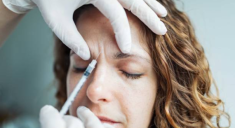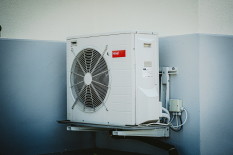Rhinoplasty, commonly known as a nose job, is a procedure that changes the shape or function of the nose. It can be done for cosmetic reasons, such as improving symmetry or refining the nasal structure, or for medical reasons, like correcting breathing issues caused by a deviated septum or injury. Choosing the right type of rhinoplasty depends on personal goals, facial structure, and medical needs. There are three main types: tip rhinoplasty, full rhinoplasty, and liquid rhinoplasty. Tip rhinoplasty focuses on reshaping the nasal tip for a more refined look. Full rhinoplasty involves a complete reshaping of the nose, altering its size, structure, or function. Liquid rhinoplasty is a non-surgical option using injectable fillers to temporarily enhance the nose’s appearance. Each option has unique benefits suited to different needs.
Understanding the Different Types of Rhinoplasty
Rhinoplasty comes in different forms, depending on the changes a person wants to make. Some procedures focus on specific areas, while others reshape the entire nose. One of the most common types is tip rhinoplasty, which refines only the nasal tip.
Tip Rhinoplasty (Refining the Nasal Tip)
Tip rhinoplasty is a specialized surgical procedure that improves the shape and definition of the nasal tip without altering the bridge or overall structure of the nose. It is designed to enhance facial harmony while maintaining a natural appearance.
Who Is It For?
This procedure is ideal for individuals with a bulbous, drooping, or asymmetrical nasal tip. It is also suitable for those who want to refine the shape of their nose without undergoing a full rhinoplasty. Since the procedure is focused on a small area, it allows for precise enhancements while preserving the nose’s unique characteristics.
Procedure Details
During the surgery, the surgeon reshapes or grafts cartilage to achieve a more defined and proportional nasal tip. The procedure can be performed using either an open or closed approach, depending on the complexity of the case. Local or general anesthesia is used to ensure patient comfort throughout the surgery.
Recovery and Results
Recovery from tip rhinoplasty is generally quicker than full rhinoplasty, as it involves minimal structural changes. Swelling and bruising typically subside within 1-2 weeks, allowing patients to resume daily activities sooner. The final results become fully visible within 6-12 months as the tissues heal and settle into place. This procedure offers long-lasting improvements, enhancing both facial balance and confidence.
Full Rhinoplasty (Complete Nose Reshaping)
Full rhinoplasty is a surgical procedure that reshapes the entire nose, including the bridge, nostrils, and tip. It can improve both appearance and function, making it a good option for those who want cosmetic changes or need to fix breathing problems caused by a deviated septum or other structural issues.
Who Is It For?
This procedure is ideal for people who want major changes to their nose, such as adjusting its size, shape, or symmetry. It is also suitable for individuals with congenital defects, previous nasal injuries, or breathing difficulties.
Procedure Details
The surgery can be done using an open or closed approach. In an open procedure, a small incision is made on the outside of the nose, allowing better access to reshape the structure. A closed procedure involves internal incisions, leaving no visible scars. The surgeon may adjust the bone and cartilage to achieve the desired shape and, if needed, perform a septoplasty to improve airflow and breathing.
Recovery and Results
Swelling and bruising are common and usually last for 2-3 weeks. While most of the visible healing happens within the first few months, full recovery can take 6 months to a year as the nose settles into its final shape. This procedure provides long-term results that enhance both facial harmony and nasal function.
Liquid Rhinoplasty (Non-Surgical Nose Job)
Liquid rhinoplasty is a non-surgical procedure that uses dermal fillers, such as hyaluronic acid, to temporarily change the shape of the nose. It can smooth out bumps, add volume, and improve symmetry without the need for surgery. Since it does not involve cutting or reshaping bone and cartilage, it is a quick and minimally invasive option.
Who Is It For?
This procedure is ideal for individuals who want subtle changes to their nose without undergoing surgery. It is also a great choice for those who are unsure about committing to permanent rhinoplasty and want to see how minor adjustments can enhance their appearance.
Procedure Details
A doctor injects fillers into specific areas of the nose to create a more balanced and refined shape. The treatment takes about 15-30 minutes, and patients can return to daily activities immediately after.
Recovery and Results
There may be minor swelling or redness for a day or two, but no major downtime is required. The results are temporary, typically lasting 6 months to 2 years, depending on the type of filler used. Since the effects gradually fade, touch-ups are needed to maintain the desired look.
Comparing the Procedures: Which One Is Right for You?
| Feature | Tip Rhinoplasty | Full Rhinoplasty | Liquid Rhinoplasty |
| Invasiveness | Surgical | Surgical | Non-surgical |
| Downtime | 1-2 weeks | 2-3 weeks (full results in 6-12 months) | No major downtime (minor swelling for 1-2 days) |
| Results | Permanent | Permanent | Temporary (6-24 months) |
| Cost | Moderate | Expensive | Lower cost (but requires maintenance) |
| Ideal Candidates | Minor tip reshaping | Full nose restructuring | Temporary or subtle refinements |
| Anesthesia | Local or general | General | None |
| Breathing Improvements | No | Yes (if combined with septoplasty) | No |
Key Factors to Consider Before Choosing Rhinoplasty
When choosing the right rhinoplasty procedure, it’s important to consider your aesthetic goals. If you want only minor adjustments, such as refining the tip or smoothing a small bump, a less invasive option may be enough. However, if you’re looking for a complete transformation, full rhinoplasty is the best choice, as it can reshape the entire nose.
Budget is another crucial factor. Full rhinoplasty is the most expensive option due to surgical costs, anesthesia, and aftercare. Tip rhinoplasty is moderately priced since it focuses only on the nasal tip. Liquid rhinoplasty is the most affordable, but because its results are temporary, repeated treatments may add to the overall cost over time.
Surgical vs. non-surgical preference also plays a role. If you want a permanent change, surgery is necessary, but if you’re unsure about committing to an irreversible procedure, liquid rhinoplasty offers a non-surgical way to test potential changes.
Recovery time should also be considered. Surgical rhinoplasty requires downtime, with swelling and bruising lasting weeks. Full rhinoplasty has the longest recovery, while tip rhinoplasty heals faster. Liquid rhinoplasty, on the other hand, requires no downtime, making it ideal for those with a busy lifestyle.
The longevity of results is another key factor. Full and tip rhinoplasty provide permanent results, requiring no further procedures. Liquid rhinoplasty, however, lasts between six months to two years, allowing for adjustments over time but requiring maintenance if you want to keep the look.
Conclusion
There is no single rhinoplasty procedure that works for everyone. The right choice depends on your goals, budget, and comfort with surgery. Tip rhinoplasty is best for those who want small changes to the nose tip without altering the overall shape. Full rhinoplasty is the best option for people looking for major changes in size, shape, or function. Liquid rhinoplasty is a quick, non-surgical solution for those who want temporary improvements without the commitment of surgery. Since every nose is unique, consulting with a board-certified plastic surgeon is important. A professional evaluation can help determine the best procedure based on your facial structure, expectations, and medical considerations. Taking the time to understand your options ensures you choose the rhinoplasty that best suits your needs.
















